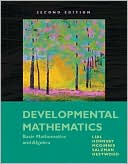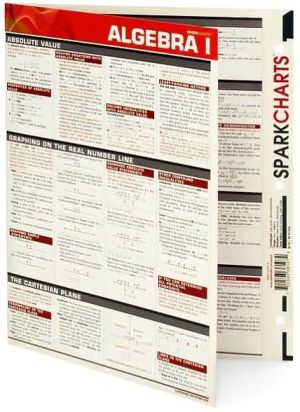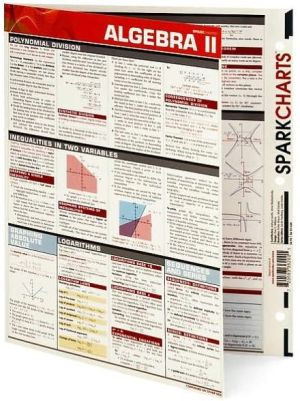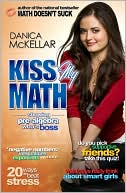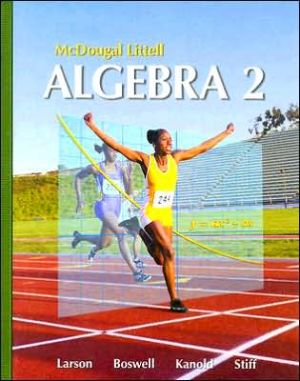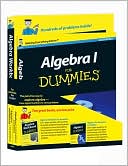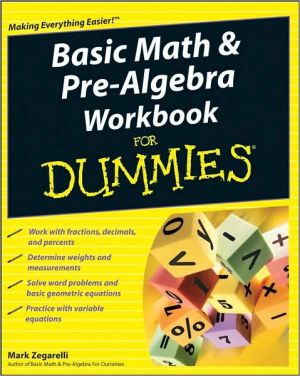Developmental Mathematics: Basic Mathematics and Algebra
Search in google:
The Lial series has helped thousands of students succeed in developmental mathematics through its approachable writing style, supportive pedagogy, varied exercise sets, and complete supplements package. With this new edition, the authors continue to provide students and instructors with the best package for learning and teaching support–a book written with student success as its top priority, now with an emphasis on study skills growth and an expanded instructor supplements package.Whole Numbers; Multiplying and Dividing Fractions; Adding and Subtracting Fractions; Decimals; Ratio and Proportion; Percent; Geometry; Statistics; The Real Number System; Equations, Inequalities, and Applications; Graphs of Linear Equations and Inequalities in Two Variables; Exponents and Polynomials; Factoring and Applications; Rational Expressions and Applications; Systems of Linear Equations and Inequalities; Roots and Radicals; Quadratic EquationsFor all readers interested in basic math and introductory algebra.
Study Skills: Your Brain Can Learn Mathematics1. Whole Numbers1.1 Reading and Writing Whole NumbersStudy Skills: Using Your Textbook1.2 Adding Whole Numbers1.3 Subtracting Whole Numbers1.4 Multiplying Whole Numbers1.5 Dividing Whole Numbers1.6 Long Division1.7 Rounding Whole Numbers1.8 Exponents, Roots, and Order of OperationsStudy Skills: Taking Lecture Notes1.9 Reading Pictographs, Bar Graphs, and Line Graphs1.10 Solving Application Problems2. Multiplying and Dividing Fractions2.1 Basics of FractionsStudy Skills: Homework: How, Why, When2.2 Mixed Numbers2.3 Factors2.4 Writing a Fraction in Lowest TermsStudy Skills: Using Study Cards2.5 Multiplying Fractions2.6 Applications of Multiplication2.7 Dividing Fractions2.8 Multiplying and Dividing Mixed NumbersStudy Skills: Using Study Cards RevisitedStudy Skills: Reviewing a ChapterStudy Skills: Preparing for Tests3. Adding and Subtracting Fractions3.1 Adding and Subtracting Like FractionsStudy Skills: Managing Your Time3.2 Least Common Multiples3.3 Adding and Subtracting Unlike FractionsStudy Skills: Making a Mind Map3.4 Adding and Subtracting Mixed Numbers3.5 Order Relations and the Order of OperationsStudy Skills: Tips for Taking Math Tests4. Decimals4.1 Reading and Writing Decimals4.2 Rounding Decimals4.3 Adding and Subtracting Decimals4.4 Multiplying Decimals4.5 Dividing Decimals4.6 Writing Fractions as DecimalsStudy Skills: Analyzing Your Test Results5. Ratio and Proportion5.1 Ratios5.2 Rates5.3 Proportions5.4 Solving Proportions5.5 Solving Application Problems with Proportions6. Percent6.1 Basics of Percent6.2 Percents and Fractions6.3 Using the Percent Proportion and Identifying the Components in a Percent Problem6.4 Using Proportions to Solve Percent Problems6.5 Using the Percent Equation6.6 Solving Application Problems with Percent6.7 Simple Interest6.8 Compound InterestStudy Skills: Preparing for a Final Exam7. Geometry7.1 Lines and Angels7.2 Rectangles and Squares7.3 Parallelograms and Trapezoids7.4 Triangles7.5 Circles7.6 Volume and Surface Area7.7 Pythagorean Theorem7.8 Congruent and Similar Triangles8. Statistics8.1 Circle Graphs8.2 Bar Graphs and Line Graphs8.3 Frequency Distributions and Histograms8.4 Mean, Median, and Mode9. The Real Number System9.1 Exponents, Order of Operations, and Inequality9.2 Variables, Expressions, and Equations9.3 Real Numbers and the Number Line9.4 Adding Real Numbers9.5 Subtracting Real Numbers9.6 Multiplying and Dividing Real Numbers9.7 Properties of Real Numbers9.8 Simplifying Expressions10. Equations, Inequalities, and Applications10.1 The Addition Property of Equality10.2 The Multiplication Property of Equality10.3 More on Solving Linear Equations10.4 An Introduction to Applications of Linear Equations10.5 Formulas and Additional Applications from Geometry10.6 Solving Linear Inequalities11. Graphs of Linear Equations and Inequalities in Two Variables11.1 Reading Graphs; Linear Equations in Two Variables11.2 Graphing Linear Equations in Two Variables11.3 Slope of a Line11.4 Equations of Lines11.5 Graphing Linear Inequalities in Two Variables12. Exponents and Polynomials12.1 Adding and Subtracting Polynomials12.2 The Product Rule and Power Rules for Exponents12.3 Multiplying Polynomials12.4 Special Products12.5 Integer Exponents and the Quotient Rule12.6 Dividing a Polynomial by a Monomial12.7 Dividing a Polynomial by a Polynomial12.8 An Application of Exponents: Scientific Notation13. Factoring and Applications13.1 Factors; The Greatest Common Factor13.2 Factoring Trinomials13.3 Factoring Trinomials by Grouping13.4 Factoring Trinomials Using FOIL13.5 Special Factoring Techniques13.6 A General Approach to Factoring13.7 Solving Quadratic Equations by Factoring13.8 Applications of Quadratic Equations14. Rational Expressions and Applications14.1 The Fundamental Property of Rational Expressions14.2 Multiplying and Dividing Rational Expressions14.3 Least Common Denominators14.4 Adding and Subtracting Rational Expressions14.5 Complex Fractions14.6 Solving Equations with Rational Expressions14.7 Applications of Rational Expressions14.8 Variation15. Systems of Linear Equations and Inequalities15.1 Solving Systems of Linear Equations by Graphing15.2 Solving Systems of Linear Equations by Substitution15.3 Solving Systems of Linear Equations by Elimination15.4 Application of Linear Systems15.5 Solving Systems of Linear Inequalities16. Roots and Radicals16.1 Evaluating Roots16.2 Multiplying, Dividing, and Simplifying Radicals16.3 Adding and Subtracting Radicals16.4 Rationalizing the Denominator16.5 More Simplifying and Operations with Radicals16.6 Solving Equations with Radicals17. Quadratic Equations17.1 Solving Quadratic Equations by the Square Root Property17.2 Solving Quadratic Equations by Completing the Square17.3 Solving Quadratic Equations by the Quadratic Formula17.4 Graphing Quadratic Equations17.5 Introduction to FunctionsAppendix A. MeasurementAppendix B. Inductive and Deductive Reasoning
